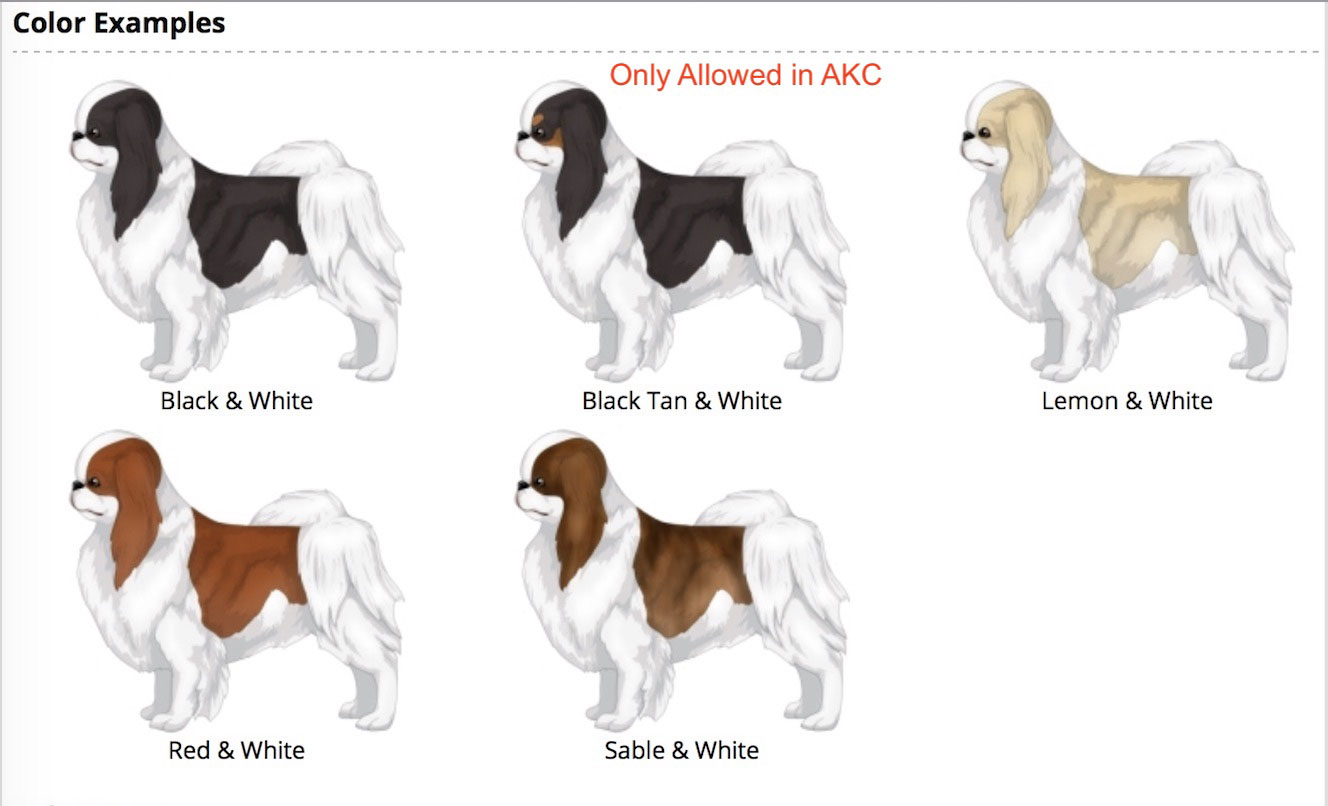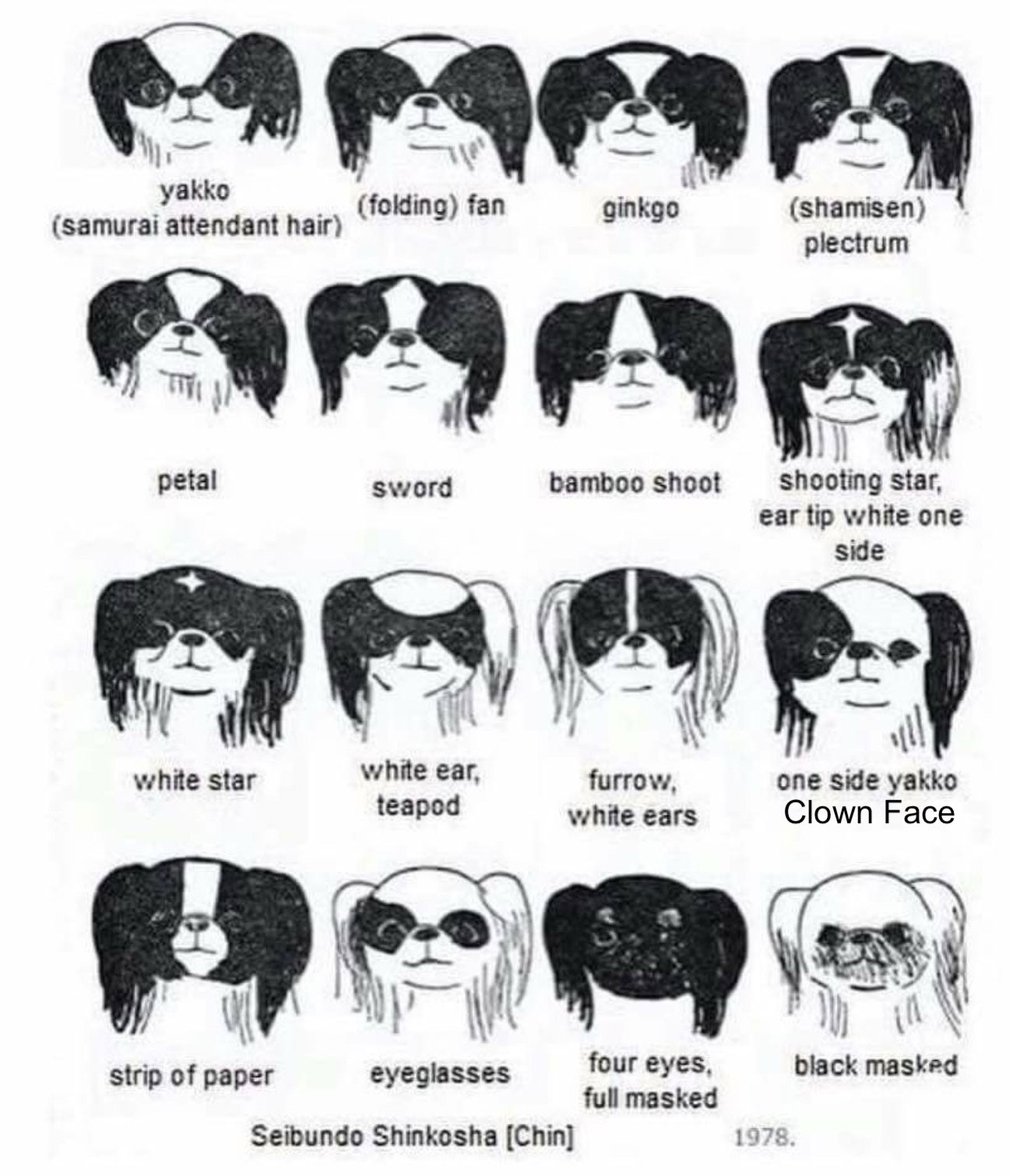Their coat is semi-long, straight, and silky.
They carry a heavy ruff at the chest and pants in the rear.
The tail should be carried up over their back with long profuse feathering.
Once your pet is spayed or neutered their coat will become even more luxurious !
Remember, your Chin will not have an adult coat until it is more than a year old.
In its "teen" stage (7-9 months) it is likely to be almost naked !
The Japanese Chin has only one layer of hair
unlike many breeds that have an undercoat and an overcoat.
Their one coat, however, is very full and luxurious.
Even the ears, as small as they are, are thoroughly feathered.
The same goes with the tail, which is abundantly feathered
with silky long hair that goes right over the back.
The neck consists of more long silky hair that forms a ruff.
The legs have a full amount of hair as well.
When the Japanese Chin is young, the amount of coat he has
is affected by genetics, hormones, their age, diet, and the climate.
They will lose most of their hair between five and twelve months of age
and often don't get their full coat until they are two or three years old.
An interesting note is that females lose their coats after their heat seasons
so a male or spayed female will have more coat than an intact female.
The Japanese Chin has a coat that needs weekly combing or brushing.
They blow their coats twice a year, usually just before summer and before winter.
They are not a heavy shedder, but they do shed year round
and need weekly brushing and combing to maintain their neat appearance.
Many owners bathe their Chin weekly to avoid the hair getting tangled and matted.
The chin must be bathed at least every 6 weeks to not get matted and to stay luxurious.
And this will also cut down on shedding. Always use a gentle shampoo
and make sure it is thoroughly rinsed out. Blow-dry the dog (on a low setting)
until he is dry to avoid him being chilled, which can cause them to get ill quickly.

The Japanese Chin may have only one coat type
but they come in a variety of different colors and shades.
Some are characteristic of the breed and others are considered flaws.
The most common color combination for the Japanese Chin is black and white.
At the dog shows, you will see more black and white Chins than any other color
which is understandable since black and white is the dominant trait.
Red is another popular Chin color, although red Chin are usually white
when they're born or have light color markings but get darker as they get older.
When they become adults, they may be any color from tan to dark red.
The pigments of the red and white chin are not as dark as the black and white.
Sable is the second most common and recognized color for the Chin.
Although many confuse sable with red, they are really quite different.
Sable Chins are usually born dark and get lighter, and clearer color as they get older.
They also have some black pigment in their color.
The tri-color Japanese Chin is the rarest of all the colors
and is only recognized for showing, in the United States in AKC and in UKC.
They are usually black mixed with tan along with some white markings.
NJoy Chin will avoid using this color in our program.
Showsight Article on Coat Colour

The coat markings of the Japanese Chin should be uniform on both sides.
Any irregularities are considered as mis-marks or smudges and both are frowned
upon in the show ring.
RETURN TO HOME PAGE
